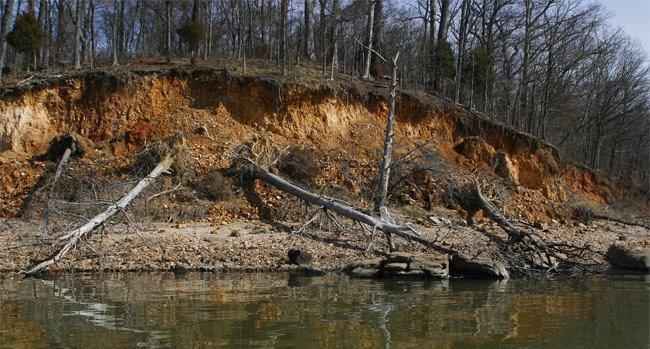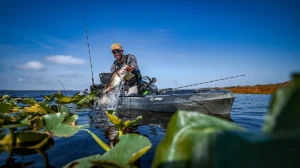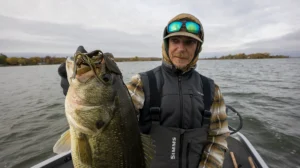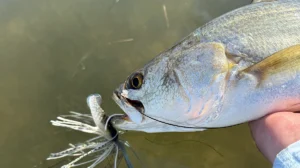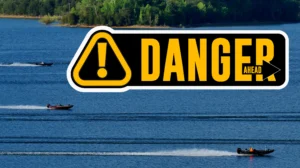Don’t just sneak jigs and worms through the brush for big bass; crash and crawl through it with reaction baits
Over the course of the last week, I’ve seen some real “eye-opening” occurrences that really changed my thought process on fishing for specific bass around specific pieces of cover, namely brush piles. Whether there naturally or dropped with cinder blocks attached by anxious anglers, brush piles offer one of the best “in between” places to find a big bass.
I can recount a multitude of stories of where one bass from a brush pile changed the outcome of an angler’s day. I know several anglers who win a lot of money on their local lakes by targeting big bass in specific brush piles. They spend hours cultivating feeding zones by placing brush at various depths and various locations throughout their lakes. They spend hours finding other brush piles. And then the spend hours learning which baits will draw strikes from the fish in those piles.
But you ask ten anglers what they will throw at a brush pile and you’re going to get one of two answers — a jig or a worm. That’s because all anglers know how snaggy a brush pile can be and how many treble hook lures you can donate to the fish gods in said brush piles.
But with what I’ve seen this week, I’m beginning to think other baits are better choices for brush pile battery. Slugging it out with bruiser bass in heavy cover is not for the faint of heart, especially when you’re talking about reaction baits, and colossal snags.
Heavy tackle, a good “feel” for what the bait is doing at all times and a little visualization can lead to huge rewards fishing around submerged brush. Typically speaking the brush is easily found with good electronics on your boat or a good map marking your locations where you planted the brush.
Visualize this type of brush below the surface when working crankbaits and spinnerbaits
Knowing a little about the brush can help with how you fish around it and how the fish will position on it. If it’s a real bushy pile, the bass can’t really get in it so to speak. So they will often hover next to, above or under it. If it’s a slick laydown tree with just a few branches, the fish will generally position around and under limbs and trunks.
Knowing the type of brush can really help on how you present your lures. A jig and worm are both obvious choices because they can be crawled up and over the cover without snagging. Using something like a crankbait, a spinnerbait or even a big spoon can be a lot trickier. The more the bait moves the more likely it is to find a snag before you get that big bass to bite. So understanding whether you can crawl over individual limbs or if you need to ride just over or next to a more bushy pile can help you avoid snags.
Using the right equipment helps just as much. When I crank around brush piles, I don’t want that slow spongy rod you might use in open water. I want a medium-heavy cranking rod and a 6:1 gear ratio reel. I’m not as worried about torque as I am being able to make the crankbait react and move away from danger in an instant. I need to have more control over the lure and I achieve that with a heavier rod as well as heavier line. A heavier line has a tendency to keep the lure up more and help it “crawl” around cover.
I will often throw 17-20 pound monofilament around brush piles. I can still get down and reach the tops of deep brush piles without bogging down into the pile. Same thing with a spinnerbait. I will often walk it up the piles or snatch it up as I start to feel the line load.
This where a good transmission between the lure and your hand is crucial. Good line and a sensitive rod will both help you feel when the bait is swimming free and when the line is encumbered or “dragging” as I call it over a limb. When I start to feel that change, I start to chance my approach to my retrieve, bringing the rod tip from just above the water to high over my head.
Sometimes if the brush is really gnarly, I will actually “worm the crankbait” up and over the cover working the bait with my rod instead of the reel. I will slowly pull the crankbait, feeling the side to side thump as I do and ticking it off limbs in the cover. Then I lower the rod tip back down and take up the slack and pull again until I feel like I’ve “cleared” the cover.
This is usually the moment when the magic happens. Good crankbait anglers will tell you a lot of bites come when the crankbait quits digging and enters that first foot or two of “clean water” without any obstruction. When I clear the cover, I will pause, maybe pop the bait and pause or pull it real hard and pause. If a bass was watching that bait come to, climb the cover and then bounce free, that’s usually when he’s keyed up enough to be tempted.
Earlier this week I was cranking a new crankbait from Ima called the Beast Hunter. We talked with the lures designer last year at ICAST and he told us how the crankbait was designed to purposely not run as deep and with a much more gradual angle as it dove to depth so that it would not swim under and catch on grass and other cover. I’ve found it’s amazing for crawling over brush piles. I probably made 40 or 50 casts through thick brush piles and got stuck a grand total of zero times.
We’ll have a full review on the crankbait, and it’s not exactly perfect for all cranking applications, but for cranking over brush, it’s very cool. As I would crank up to the cover I noticed my line looked like it started to rise a bit in the water column as I approached the cover, then I would raise my rod tip and start winding very methodically up and over the cover. The bass would drill the crankbait as it came up and over the cover.
Big bass like this one will bite crankbaits pulled through brush
Yesterday we were cranking a bit in a bay and occasionally would contact cover. Occasionally the bait would get hung. We often could pop the lure free by pulling as much line out between the reel and the first guide, pulling the rod until it bent and then snapping loose of the rod tension and the line in our other hand at the same time. You send a shockwave of slack down to the lure and it often can back a crankbait off a piece of cover without having to go into the cover and spook any would be fish out. It takes some practice and the key is always not to jerk into the cover to start.
An added bonus is that you often catch fish by snapping free of the cover and starting the bait again.
But on one of the casts, Terry worked his crankbait off some brush pile branches and his rod loaded up.
“If this is a bass, it’s a mule,” he said.
Turns out it was a bass weighing more than 6 pounds. It fell for a big wide wobbling Spro Little John DD. We have found a wider-wobbling crankbait seems to work better for banging brush. Occasionally you might get hung up but it seemed like we got hung a lot more with crankbaits with a much tighter wiggle.
We really like the SPRO Fat Papa, SPRO Little John DD and the new Ima Beast Hunter right now for this application but we’d like to hear what other crankbaits you’ve found work good for pulling over cover.
A spinnerbait can be especially effective for pulling bass out of deeper brush piles and they actually will come through the cover even a little better than the crankbaits if you keep your pull steady and not allow it to fall back into the cover sideways and hook a branch. There are a lot of good anglers who’ve kept the spinnerbaits on deep brush piles quiet for years. It works now and will work all through the summer.
One often over looked bait for those brush piles out deep is the big flutter spoon. It requires a pinpoint accuracy so that you don’t land the spoon right in the pile, but often hopping that pile around bass hanging around and above deep brush has proven to yield some extremely large bass for anglers who’ve asked to remain anonymous as to not tip off their buddies.
A jig and worm will obviously catch bass out of brush. But often times a big reaction bait catches the alpha bass that is using that brush or area as a primary feeding zone. So when you’re looking for a big bite, give a few brush piles a knock and see if it doesn’t yield the same impressive results we’ve found this week. And definitely share with us on our facebook page what you find.
